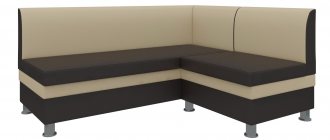When choosing a new washing machine, we try to determine in advance the presence of certain functions, the volume of things that it should wash during one cycle, and the availability of options to make the process more efficient. Dimensions play an important role, because the “washing machine” must fit in the place prepared for it.
Many people choose equipment only taking into account useful functions. And when the purchase is brought home, it does not fit through the doorways. Therefore, when choosing a “washing machine”, you must immediately tell the consultant the appropriate dimensions in order to consider only those that correspond to the required parameters.
Dimensions of top loading washing machines
A distinctive feature of such models is the loading method - the loading hatch is located in the upper part. Therefore, vertical “washers” differ in height and functions, and not in depth, unlike devices with frontal placement. In addition, machines with this modification are much narrower than those with front loading. Therefore, they are often installed in small rooms.
The first distinguishing characteristic that you need to pay attention to is height. Depending on the specific model, it may be:
- 840 mm;
- 850 mm;
- 890 mm;
- 900 mm.
In some cases it may be equal to 800 mm. The height of compact models does not exceed 660 mm. Also on sale you can find miniature cars with parameters of 420 mm.
In vertical models, the depth is often greater than the width. The exception is low cars, which have an almost cubic shape.
The standard width to depth ratio is 600*400 mm.
Reference. Top-loading washing machines are especially convenient for people suffering from joint diseases or back pain, as well as pensioners. After all, in this case you do not need to bend over to place the laundry.
The equipment is capable of washing up to 7 kg of dry laundry at a time. This is quite enough to take care of not only ordinary things, but also blankets, rugs and other bulky textiles.
Standard height of a washing machine (video)
As has already become clear, choosing a washing machine is a responsible matter. Therefore, before paying for equipment, you need to think through everything carefully and measure it.
Similar articles
- Washing machine dimensions: front loading dimensions, standard width top loading
If you need to choose a built-in washing machine, it is better to carefully study its dimensions first. The washing machine market is crowded, and more and more... - How to remove a drum on a washing machine: disassemble for repair, pull out and unscrew, disassembling the machine
Before removing the drum, it is worth studying the design of the washing machine. Removing the drum is carried out after precise confirmation of the malfunction or... - Narrow washing machines: the best with front loading, review of machines, washing depth 60x40, cons
New automatic washing machines are good because they allow you to quickly wash Narrow washing machines are compact and…
Standard dimensions of front-loading machines
Models with front modification can be divided according to three main characteristics: height, width, depth.
The standard width is 600 mm. It is quite difficult to find wider devices intended for domestic use. However, professional units may differ from standard parameters. For example, the Miele PW6080 Vario LP RU model has a width of 700 mm.
If you try, you can find narrower equipment, for example, the compact Electrolux-EWC1350 boasts a width of only 495 mm.
The classic height of equipment of this modification is considered to be 850 mm plus or minus 1 cm. This designation is not accidental: according to existing standards, this height is considered the most comfortable for work. Therefore, most equipment options have an indicator of 850 mm.
Thanks to this, the “washing machine” is convenient to install together with a kitchen set. It will not stand out in height and spoil the appearance of the room.
Depth is the most important parameter to consider when choosing a technique. This indicator directly depends on the volume of laundry loaded:
- 5 kg - 400 mm;
- 6 kg - 450–600 mm;
- 7 kg - 600 mm;
- 8 kg - 600–730 mm.
How does loading depend on size?
All SMAs on the market can be divided into standard, narrow and compact washing machines. Each type differs in capacity - it determines how much laundry can be washed at a time.
When loading horizontally, the tank is located in such a way that developers are forced to increase the depth of the device - hence the standard 60 cm. If you reduce the size of the tank and drum, the washing machine loses capacity. How many things can you wash at a time? Don’t think that it’s just the dimensions of the case, but what’s more important is the size of the drum. By increasing its diameter, it is possible to reduce the depth of the frontal SMA, but still their capabilities are limited to 12–14 kilograms. And most modifications wash 5–8 kg per cycle.
In the “vertical” units, the developers positioned the drum in such a way that they managed to reduce the width of the device. At the same time, household versions hold up to 7–8 kg of dry weight. The width is reduced and the capacity is good. Professional versions can hold 36 kg or more - you can even wash carpets in them.
Height, width and depth of narrow washing machines
Narrow washing machines are devices whose width does not exceed 400 mm. They can wash no more than 4 kg of laundry at a time. At the same time, they are not inferior in functionality to other models. For example, Gorenie WS62SY2B is equipped with 16 washing programs.
Some manufacturers use a trick and increase the volume of the drum, stretching it, while the depth remains unchanged. This allows you to load up to 5 kg of things into the unit. A striking example is the narrow automatic washing machine Candy CS34 1051D1/2. Its depth is 340 mm, but 5 kg of things can be placed in the stretched drum.
The width and height of narrow models does not differ from standard ones: 850*600 mm.
Zanussi: basic parameters
The Swedish company produces Zanussi top-loading washing machines. This brand is well-known and in demand among buyers of household appliances. Here are its characteristics:
- The standard maximum weight for loading things is 6-7 kg.
- Maximum spin speed is 1200 rpm.
- Energy consumption class - A++, washing - A, spin - B.
- The standard number of programs is 8.
- Built-in full protection against leaks.
- Electricity consumption is 0.8 kW/hour.
- One cycle requires 47 liters of water.
- The Zanussi top-loading washing machine has a child lock and a delayed start timer.
- There are pre-wash, extra rinse, and light ironing modes.
- Management is carried out using an electronic scoreboard. Information about the remaining cycle time is reflected on it.
- At the end of the wash, a beep sounds.
The dimensions of the Zanussi top-loading washing machine are 60x40x89 cm.
Dimensions of washing machines for installation under the sink
Such devices belong to non-standard models of “washing machines”. The unusual installation method limits them in all major dimensional characteristics.
With standard placement, the washbasin is mounted at a distance of 900 mm from the floor. If you want to install a washing machine under the sink, give preference to models with a flat bottom. For convenience, the drain is located on the side or in the back. But even despite this arrangement, the siphon occupies 100 mm. Therefore, the height of compact machines does not exceed values from 550 to 600 mm.
To prevent appliances from protruding beyond the edges of the sink and drops of water falling on its surface, the depth was reduced to 500 mm. Thanks to this, they not only fit well into the room, but also make them convenient to use.
Reference. When installing equipment, do not forget about the need to leave free space between the wall and the back. It should accommodate cables and hoses. In addition, it should not come into contact with the washbasin, otherwise it will vibrate.
Tips for choosing
First you need to measure the space for installing the washing machine and select the type of load. If there is a lack of space, washing machines with a vertical loading method are usually chosen. Next, you need to consider the following points:
- Be sure to read reviews from other consumers or ask consultants about built-in programs. Standard cycles can be about 2 hours or more. Therefore, it is worth considering models with the ability to manually regulate the duration of the process.
- To wash heavily soiled laundry, it is better to buy a machine with pre-wash or pre-soak functions. The “easy ironing” or “steam” functions will help make ironing easier.
- Devices with an electronic display are convenient, which displays the time and stage of the washing process. You should pay attention to the energy consumption class. And purchase devices that allow you to save money on electricity bills.
- Washing machines may make sounds and vibrate during washing and spinning. It is worth carefully studying the noise level indicators so as not to experience discomfort in the future.
- Before installation and connection, it is advisable to read the operating instructions.
A washing machine is a household appliance with a long service life, usually about 10 years. You should choose carefully, paying attention to many characteristics. If you don't have enough space, you can consider a top-loading washing machine. Its dimensions are 90x60x40 cm.
Dimensions of built-in equipment
Appliances that can be installed in the kitchen are very popular. Such models can be mounted in a cabinet or under a tabletop, which allows you to increase the usable space in the room. To ensure that the “washing machine” fits harmoniously into the overall style of the kitchen, a decorative door is hung on it.
The standard height of built-in models is 850 mm. The width also has classic dimensions - 595–600 mm.
The most varied is the depth parameter, although deep and narrow models cannot be found on sale. Wide ones simply won’t fit in the headset, while narrow ones leave a lot of free space. Therefore, the most optimal depth is from 560 to 580 mm.
Washing machine weight
Despite the differences in size, most household washing machines weigh between 50 and 60 kg.
This is due to the fact that the steel drum and counterweight have the maximum weight, which is necessary to suppress vibration, and the plastic parts account for noticeably less.
Washing machine
Minimum and maximum dimensions
The height of the washing machine is far from the only indicator by which you should choose a suitable model.
It is very important not to forget to take into account parameters such as the width of the device and its depth. But the dimensional guidelines of washing machines with different types of loading have significant differences
To begin with, it is proposed to consider “washing machines” with horizontal opening. Standard full-size structures have a height of 85-90 cm. The width of this product does not go beyond 60-85 cm. In this case, the depth of the device will be 60 cm.
Narrow models differ only in the drum depth of 35-40 cm. At the same time, the maximum volume of laundry that a narrow model can wash at one time is 5 kg. Compact models, even in appearance, indicate fewer capabilities. Despite the fact that the drum depth is 43-45 cm, the machine can wash only 3.5 kg of laundry per load. Built-in front-loading models resemble full-size options in their characteristics. They have almost the same height, width, and depth.
The height of large-sized top-loading washing machines is 85-100 cm, while the width of the body reaches 40 cm. The depth of such models is at least 60 cm. The maximum weight of laundry for one load is 6 kg. Standard vertical “washers” have a height of 60-85 cm. The width of the design body is 40 cm. The depth is similar to large-sized models, namely 60 cm.











